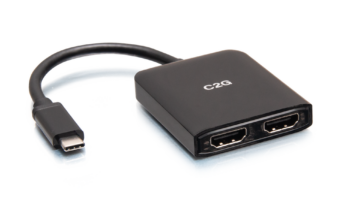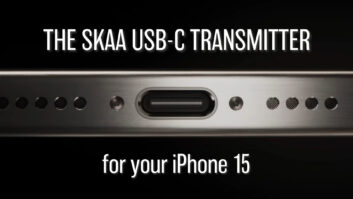VisionTek has released two lines of USB drives, one based on USB 2.0 and the other on the slower USB 1.1 specification. Meanwhile, SanDisk announced that it is entering the USB flash drive market with the introduction of the Cruzer Mini.
VisionTek, a division of the Hartford Computer Group that bought Argus Camera in July, has four SKUs in its Go USB 1.1 product line, with capacities of 64MB, 126MB, 256MB and 512MB. The USB 2.0 Go Extreme series adds a 1GB model to this lineup. Prices range from $39.99 to $329.99 for both lines.
VisionTek’s executives acknowledged that having products based on two technologies delivering vastly different download speeds on store shelves could cause consumer confusion, particularly since the USB 1.1 drives will not function in a USB 2.0-equipped PC. To assist consumers VisionTek is using the USB Implementers Forum’s logo for each type of technology. The USB 1.1 drives simply say USB, while the USB 2.0 versions have Hi-Speed USB printed on the merchandise.
VisionTek expects the USB drive market to continue on a quick growth path. The company cited data from Gartner Dataquest that showed the market grew by a factor of four from 2001 to 2002. Supporting this growth in the coming years is the increasing demand for digital cameras and other multimedia devices. The often mentioned, but never realized, demise of the floppy diskette could also boost USB drive sales as consumers look for another method of quickly sharing files between computers.
The Go and Go Extreme products were initially rolled out in the Fry’s Electronics chain, but the company expects to add additional retailers soon.
The SanDisk Cruzer Mini is an embedded USB 2.0 flash drive about the size of a lipstick case. It is already shipping to major retailers in North America with broader distribution beginning in August. It initially will be available in two capacities, 128MB and 256MB, with suggested retail prices of $49.99 and $79.99, respectively.
SanDisk plans to introduce higher capacity Cruzer Minis later this year.
The Mini will ship with three decorative end-caps that fit over a “light-pipe” status indicator and the USB connector, allowing consumers to dress the drive to suit their fashion.
“As USB flash drives become more commonplace in the market, industrial design will help differentiate the products,” said Eric Bone, SanDisk’s retail product marketing manager.
“We are trying to address the sweet spot of the market with these two capacities,” Bone said. “We think that this pricing will drive customers to higher capacity flash drives.”
While other flash memory manufacturers had jumped on the USB drive market early, SanDisk initially offered a twist from the straight embedded-memory USB drive with its original Cruzer, a USB drive that used removable SD memory rather than embedded flash.
The benefit, according to a SanDisk spokesman, was that the product was easily upgradeable using higher-capacity SD cards, and could transfer images from devices that accepted SD memory easier. The downside was a larger form factor to accommodate the SD card and higher retail prices for comparable capacity embedded drives.
SanDisk will continue to sell the original Cruzer along with the new Cruzer Mini.
According to the research firm NPD Group, Port Washington, N.Y., U.S. retail sales of USB flash drives reached 171,000 units this past May. Retail unit sales have been growing at a rate of more than 20 percent a month this year, according to NPD.













